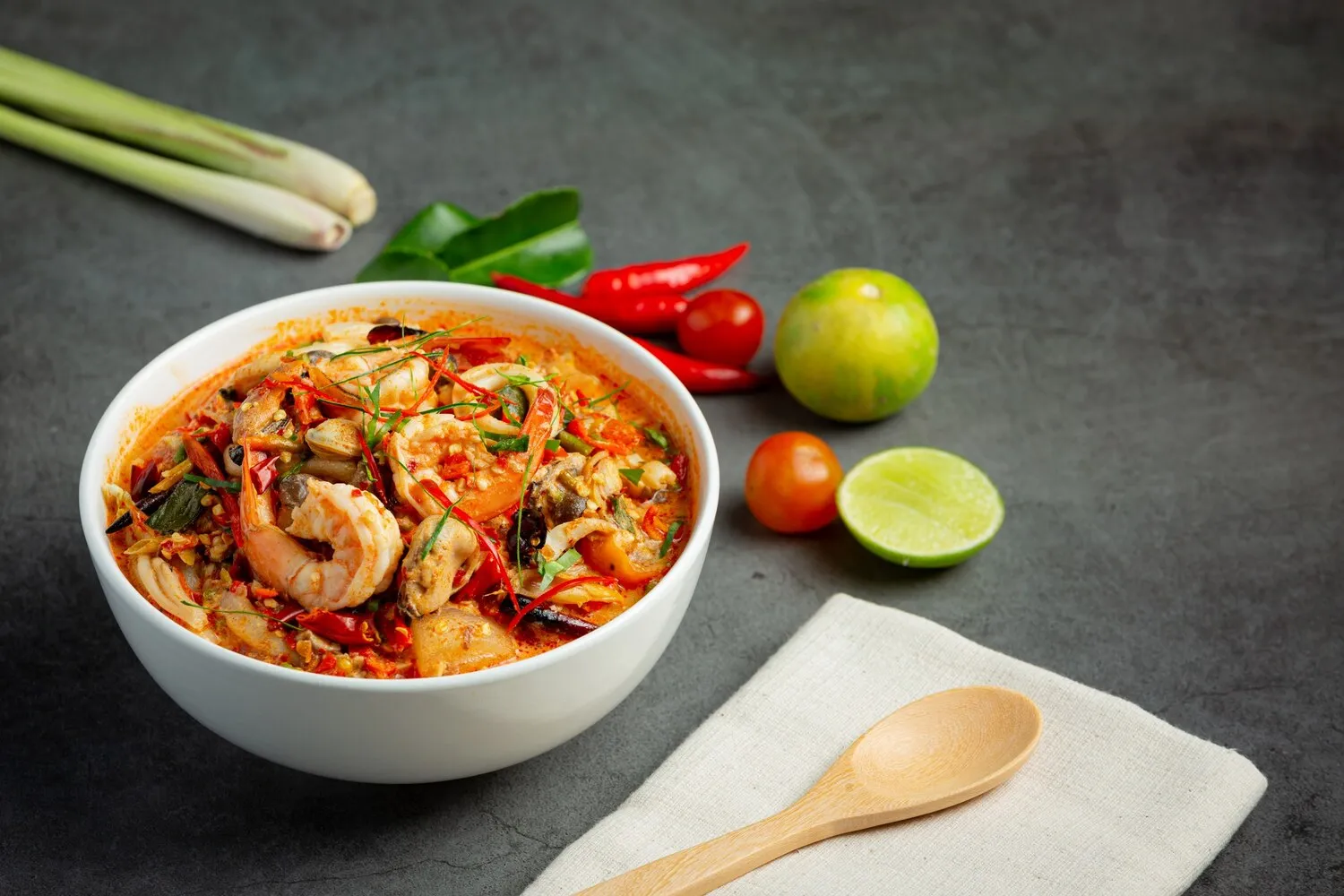
Soup of the Day
Freshly made soup. The flavor changes daily depending on what's fresh and available.
Nutrition Facts
* The % Daily Value (DV) tells you how much a nutrient in a serving of food contributes to a daily diet. 2,000 calories a day is used for general nutrition advice.
Soup has been a staple food for millennia, with evidence of its consumption dating back to the Stone Age. Different cultures have developed their own unique soup recipes using locally available ingredients and reflecting their culinary traditions. The concept of a 'Soup of the Day' in restaurants is a more modern adaptation, showcasing the chef's creativity and utilizing seasonal produce.
While 'Soup of the Day' isn't tied to a single culture, soup itself holds significant cultural importance worldwide. It often represents comfort, nourishment, and home cooking. The offering provides variety and introduces diners to different flavor profiles daily.
Seasonal Eating
The 'Soup of the Day' often highlights seasonal ingredients, connecting diners to the local agricultural cycle and promoting sustainable eating practices.
Culinary Exploration
It encourages diners to try new flavors and ingredients they might not otherwise encounter, broadening their culinary horizons.
Reducing Food Waste
Chefs can utilize leftover ingredients and scraps in soups, minimizing food waste and promoting resourcefulness.
The flavors of the 'Soup of the Day' are highly variable, dependent on the specific recipe and ingredients used. The possibilities are endless, ranging from light and refreshing vegetable broths to rich and hearty stews.
The flavor profile could be savory, sweet, spicy, tangy, or umami-rich, depending on the combination of ingredients. Common ingredients include vegetables (carrots, celery, onions, tomatoes, potatoes), herbs (parsley, thyme, basil), spices (pepper, cumin, paprika), meat or poultry (chicken, beef, pork), legumes (lentils, beans), grains (barley, rice), and dairy products (cream, milk, cheese). Stock or broth forms the base, contributing depth of flavor. The specific ingredients and their proportions dictate the overall taste and texture of the soup.
Ask About Allergens
Always inquire about the ingredients if you have any allergies or dietary restrictions.
Pairing Suggestions
Consider pairing the soup with complementary sides like crusty bread, a salad, or a grilled cheese sandwich.
Homemade Stock is Key
When making soup at home, using homemade stock or broth will significantly enhance the flavor.
Taste and Adjust Seasoning
Always taste the soup and adjust the seasoning (salt, pepper, herbs) to your liking.
Explore additional Soup dishes and restaurants
Explore SoupDiscover top dining spots and culinary experiences in Inverness.
Explore InvernessLearn more about the food culture, restaurant scene, and culinary heritage of Scotland.
Explore Scotland